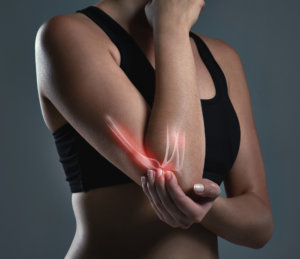Heat or Cold Therapy When Treating Injuries
As a Sports Medicine Practitioner in NYC, I constantly get the question “Should I use ice or heat when treating my injury?”
Many of my patients even forget about the two most fundamental, cost-effective, and non-pharmacological remedies for acute and chronic musculoskeletal injuries.
 “Cryo” or Cold Therapy and “Thermo” Heat Therapy are the two most natural, holistic, and oldest forms of pain relief. The concept of cold and heat therapy is to alter tissue temperature to induce a biological response that provides pain relief to a desired area.
“Cryo” or Cold Therapy and “Thermo” Heat Therapy are the two most natural, holistic, and oldest forms of pain relief. The concept of cold and heat therapy is to alter tissue temperature to induce a biological response that provides pain relief to a desired area.
According to the Journal of the Royal Society of Medicine, the ancient Egyptians were even aware of the analgesic and anti-inflammatory effects of cold treatment.
Heat therapy can also be traced back to the ancient Egyptians, who used hot water, steam and sand to treat muscle spasms and pain. The most ancient medical text, dated back to 3500 B.C., made several references to the use of cold therapy.
Are you currently recovering from an injury? Give us a call to schedule an appointment with one of our practitioners: (212) 475-8104. You can request an appointment with one of our Manhattan Chiropractors here.
What Happens Initially After an Injury Occurs
- During the first 10 minutes after an injury, vasoconstriction occurs, preventing local blood loss.
- After the initial 10 minutes, vasodilation occurs. Fluids and proteins leak into the interstitial space through capillaries and deposit leukocytes or white blood cells that attack the area to fight infection and help repair the dead or injured tissue.
- This response causes venous and lymphatic flow to be blocked further resulting in inflammation and pain.
How does cold therapy affect the body?
During the acute phase of injury, inflammation is unfortunately an essential component to the healing process. Cold therapy provides several physiological effects including:
- Reduced pain: Cold therapy slows the conduction velocity of peripheral nerves, which can mask the sensation of pain.
- Decreased blood flow: Ice is vasoconstrictor, which decreases or slows blood flow to the area reducing the amount of edema.
- Decreased edema and inflammation
When should I use ice therapy?
- Acute injuries that resulted in some sort of acute trauma such as sprains, strains, contusions, and fractures. Could therapy should be applied with in the first 24-72 hours of injury.
- Ice can also be used during a re-exacerbation of pain or following overuse of a specific muscle, tendon or ligament.
How long should I ice for?
- During an acute injury, ice should be applied 20 minutes on and minutes off for the first 24-72 hours.
Examples of Applying Cold Therapy
- Ice pack
- Ice bath/ whirlpool
- Ice massage (ice cube or frozen ice cup- made by freezing water in paper dixie cup)
- Cryotherapy
How does Heat Therapy affect the body?
Opposite to cold therapy, heat therapy is a vasodilator and works to increase circulation and blood flow. By increasing blood flow and circulation this can relax the muscle and increase muscle flexibility. The physiological effects of heat therapy include:
- Reduced pain
- Increased blood flow
- Increased metabolism
- Increased elasticity of connective tissues
When should I use heat therapy?
- Chronic conditions caused by overexertion, muscle cramps and spasms.
- Stiffness caused by chronic arthritic pain.
- Heat can also be used for overuse injuries before participating in activities.
When should you NEVER consider heating?
- Immediately after acute injury or hematoma
- During an acute infection. Example: open wound or burn
- Areas with poor circulation or lack of sensation
Examples of Applying Heat Therapy
- Hot packs
- Hot bath/whirlpool
- Hot shower or bath
